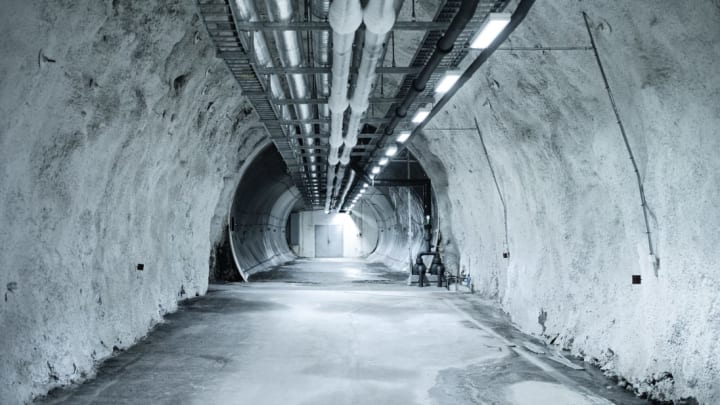Ten years ago, Norway build the Svalbard Global Seed Vault, a secure storage facility deep within an Arctic mountain designed to keep seeds from the world’s essential crops safe from any kind of disaster. Though it’s not the only seed bank, it is the world’s largest, with nearly 900,000 seed samples in long-term storage. And now, according to The Verge, the facility is due for a makeover worth more than $12.7 million.
Owned by Norway’s Ministry of Agriculture and Food and run by the Nordic Genetic Resources Center, the Svalbard Global Seed Vault is situated north of the Arctic Circle on an archipelago between mainland Norway and the North Pole. It acts as a backup library of seeds for the world’s major crops, providing a way to revive food sources if a country’s food supply is destroyed by natural disasters, warfare, or pests. The first of its seed deposits were withdrawn in 2015 to replace seeds samples from another gene bank destroyed in the Syrian civil war.

Ministry of Agriculture and Food, Flickr // CC BY-ND 2.0
The seeds currently stored there are kept in vaults located almost 400 feet underground, ensuring that they will stay cold even if the mechanical cooling systems fail or as temperatures rise outside due to climate change. But now, 10 years after the mountain storage facility opened, it’s due for some upgrades to keep it running smoothly. On February 23, the Norwegian government announced a proposal to upgrade the infrastructure of the vault, including constructing a new access tunnel and a service building that will contain emergency power and refrigeration sources.
To keep seeds safe for future generations in perpetuity, the vault will have to be able to withstand the effects of climate change, which will include the melting of the permafrost that keeps the facility cool. In 2017, melting permafrost seeped into the vault, and while none of its samples was damaged, the failure does suggest that we can’t rely on permafrost to keep the vault’s treasure at a safe temperature if the mechanical cooling systems change. The new access tunnel will be more water-resistant, and the service building will keep sources of heat away from the vault itself. The work is scheduled to be done by May 2019.
Despite the melting permafrost, Svalbard is still considered one of the safest places in the world for really, really long-term storage. In March 2017, the seed vault got a new neighbor, the history- and culture-focused Arctic World Archive.
[h/t The Verge]
